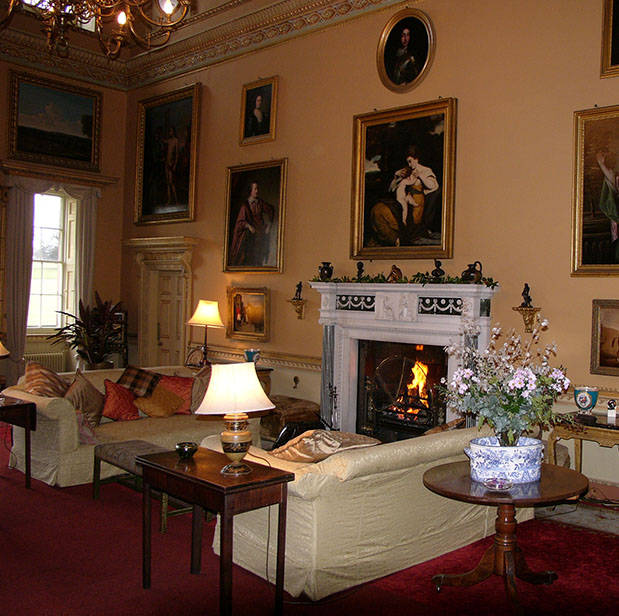Rokeby

-
Architecture
Rokeby Park, described by Giles Worsley in 1987 as “one of the purest examples of the neo-Palladian villa”, was designed by its owner and talented amateur architect Sir Thomas Robinson (1702-1777).
Constructed between 1725-1730, with maximum emphasis given to the central domestic block, it was approached through the courtyard to the north. The courtyard is bounded by the offices and stables positioned en echelon to the central cube…
-
INTERIORS
The internal layout and decorative schemes have evolved over the years. Only two rooms, the Library, with its Tuscan columns, and the Music Room, with its early egg and dart and Greek key plasterwork and pedimented doorcases, survive largely unaltered from the 1730s. The spectacular Saloon on the first floor has the proportions of a cube and a half, being 27 feet wide and tall, by 40 feet and 6 inches long.
The dining room, with the double Venetian window, created for the new owner J.S. Morritt in 1778, by John Carr, contains some fine neo-classical plasterwork by Joseph Rose Jnr. A rare surviving ‘Print Room’ of French prints also dates from this period.


-
ART
Perhaps the most fascinating of all the works of art to be found at Rokeby are the exquisite needlework ‘paintings’ created by Anne Eliza Morritt (1726 – 1797), spinster sister of J.S. Morritt. Over 40 examples of her work are on display, including copies of work by Poussin, Rubens, Salvator Rosa and Zuccarelli.
Velasquez’s ‘Toilet of Venus’was purchased by JBS Morritt and hung at Rokeby for almost a century. The painting was bought by public subscription in 1905 and now hangs in the National Gallery… A copy of
-
FURNITURE & CERAMICS
As Sir Thomas Robinson sold Rokeby with its furnishings and pictures, many of the contents are contemporary with the house, with older Florentine and Venetian items collected on Grand Tours made by Robinson and later by J.B.S. Morritt (1794-6). There are examples of George II through to Regency furniture by Gillow of Lancaster, with copies of two commodes and a double knee desk by Vile, made by Mallet to replace the originals bought by Queen Mary in the 1920s. The ceramics collection includes items by Sevres, Rockingham and exhibition pieces by Minton….

